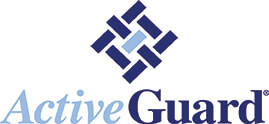Last week, we discussed bed bug prevention in a hotel setting at the macro level. To recap, when a proactive approach is not taken, there are significant direct and indirect costs that can result. This week, we will elaborate on the most obvious – losses to the bottom line.
When a guest reports bed bugs to hotel management, the ‘target room’ and others in the nearby vicinity must remain out-of-service until they are inspected and treated, if necessary. The choice of treatment approach (heat or chemical) can result in rooms being out-of-service for a few days or more. Only once deemed effectively treated by a licensed pest management service provider are they allowed to be returned to service.
On top of that, guests will more than likely demand full compensation for their stay, along with expenses associated with dry cleaning and meals for their troubles. Operationally, the hotel may choose to dispose of linens, comforters, and pillows that may have come into contact with a bed bug while absorbing the cost of time incurred by staff handling the situation.
These expenses and loss of revenues are infrequently if ever, aggregated to form the basis of the ‘true cost’ of a bed bug incident in a hospitality environment.
It is only when hoteliers realize the ‘true cost’ of bed bugs can they appreciate the value of prevention. Average-sized hotels save between 50-65% of their direct remediation costs when a preventive strategy is implemented first. Scaling up to a large convention-sized property, a hotel enjoyed savings of nearly $500,000 per year as a result of adopting prevention. These direct savings need to be coupled with the reduction in potential legal and insurance costs, and the financial impact on brand reputation to fully appreciate the benefits prevention affords.
Come back next week when we focus on losses connected to brand reputation. In the meantime, take our survey on how the cost of bed bugs in your hotel is so much more than simply the fee for treatment. We look forward to sharing the results with the industry.
About Allergy Technologies
ActiveGuard Mattress Liners kill bed bugs. Easily installed on mattresses or box springs, these liners offer two-year continual prevention and control against any adult bed bugs, nymphs or eggs. ActiveGuard has no cautionary signal words or use restrictions on its label. Only four sizes—single/twin, double/full, queen and king—fit almost every available mattress or box spring and accommodate up to extra-large in length and 17-in. in depth. Underlying is ActiveGuard’s formulation; a unique and proprietary delivery system that offers sustained bioavailability of permethrin for two years. Newest research supports that after a short exposure to ActiveGuard of only 10 minutes, bed bugs regardless of their level of resistance, begin to show significant reductions in feeding (biting) and a dramatic inability to lay eggs. This results in discontinuation of population growth thereby halting progression of an incident to an infestation. If you are seeking a pro-active preventative approach, ActiveGuard should be considered as the centerpiece of your long-term solution to keep bedding from being infested. ActiveGuard Mattress Liners are covered under U.S. Patents 5,916,580, 6,214,365, 6,440,438 and pending patents.
For more tips on preventing bed bugs and uncovering infestations early visit us online at www.hotelbedbugprevention.com.


